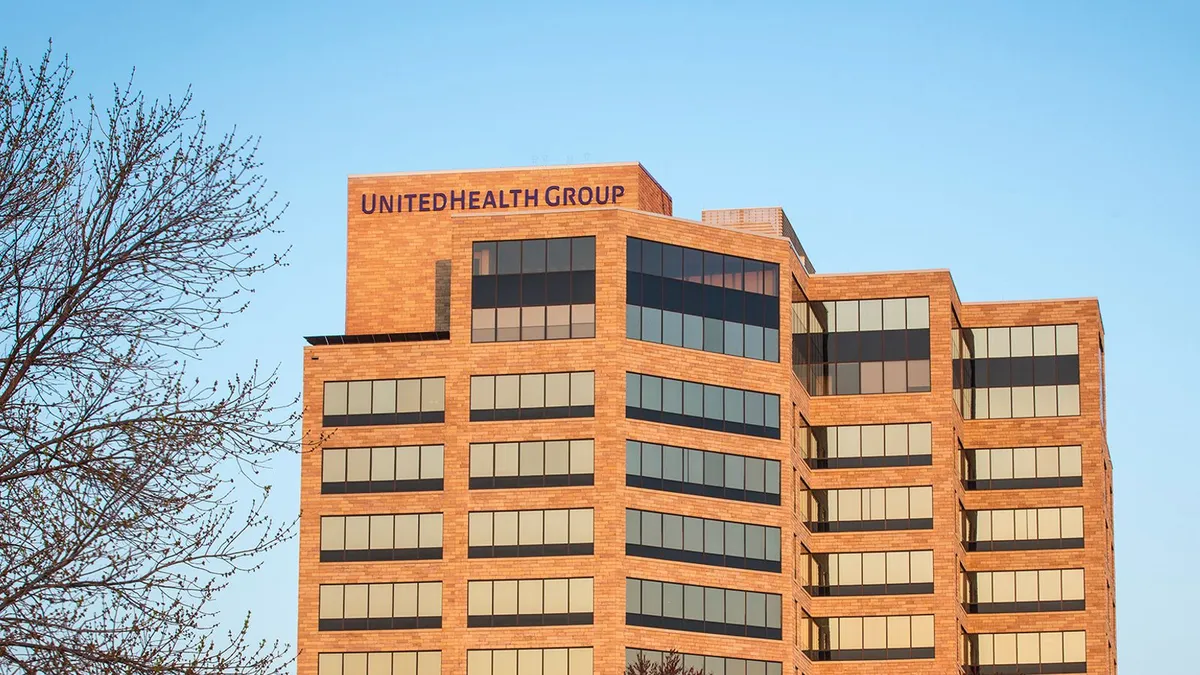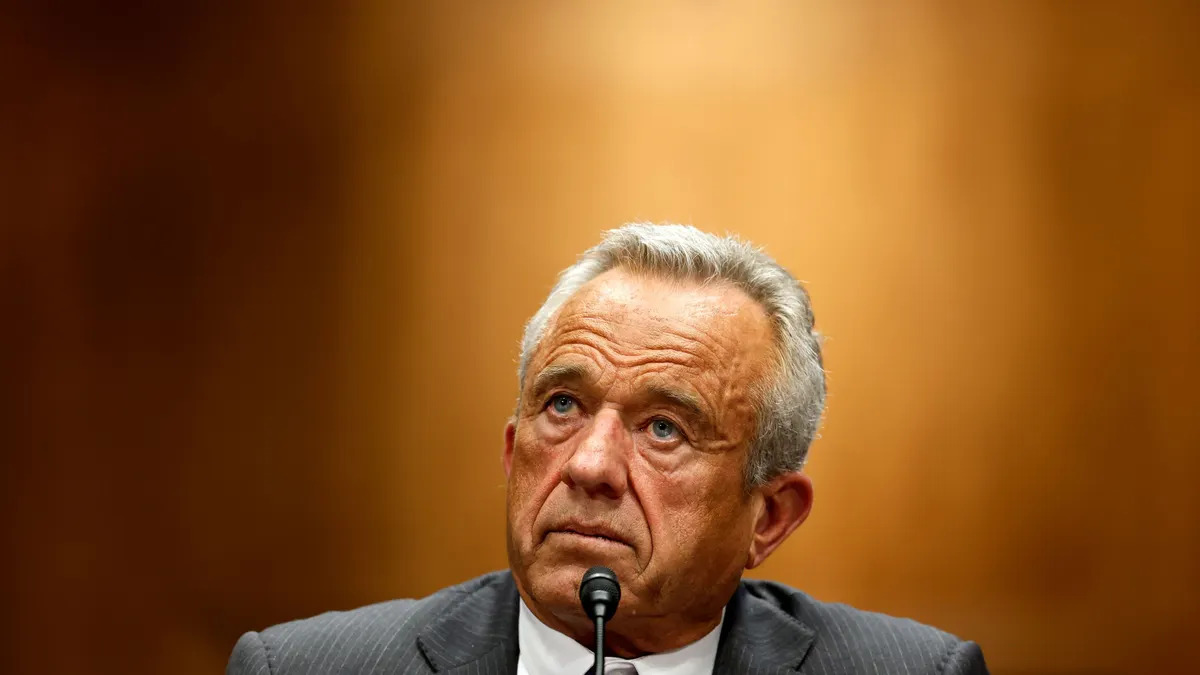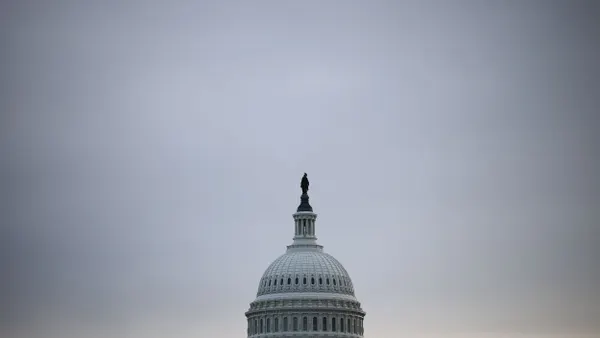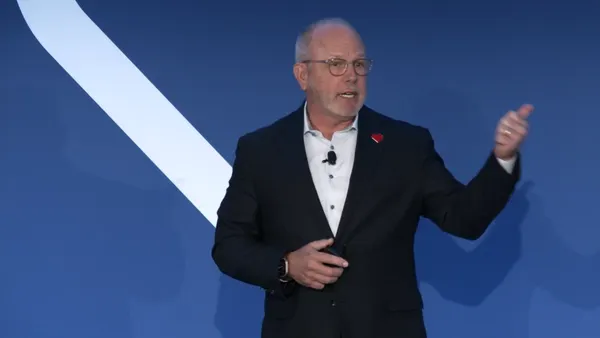Dive Brief:
- UnitedHealth has set new financial guidance for 2025 well below what analysts expected, after pulling its outlook earlier this year amid spiking medical expenses.
- The beleaguered healthcare behemoth’s second-quarter results released Tuesday also underperformed earnings forecasts. Executives said they significantly underestimated accelerating medical trend when they priced their plans for this year, especially in Medicare Advantage.
- In addition, new CEO Stephen Hemsley outlined how UnitedHealth plans to have a more transparent relationship with federal regulators and the public at a time of intense scrutiny of its business practices. UnitedHealth’s stock fell 5% in Tuesday morning trading following the results
Dive Insight:
UnitedHealth announced the abrupt exit of its CEO Andrew Witty in May, along with fully withdrawing its 2025 outlook. As such, the second quarter is the company’s first under Hemsley, the chairman of UnitedHealth’s board and its CEO from 2006 to 2017.
Hemsley has his work cut out for him in turning UnitedHealth around. The company, once a darling of Wall Street, has seen its stock tumble amid dogged medical cost increases, fraying consumer trust, and criminal and civil investigations by the Department of Justice that UnitedHealth acknowledged for the first time scant days ago.
The Minnesota-based company — which includes the largest private payer in the country, a major pharmacy benefit manager and a large physician network — is reportedly facing scrutiny for inflating the sicknesses of its MA members and delaying and denying care in order to profit.
UnitedHealth's stock is down 44% year to date
During a call with investors Tuesday morning, Hemsley said that UnitedHealth plans to refocus on business fundamentals to right the ship, while committing to increased public transparency
“At this moment I believe it’s important to convey the tone we’re setting at this enterprise. More than anything it is a tone of change and reform,” Hemsley said. UnitedHealth is making a “real cultural shift” in its relationship with regulators and the public, including assessing its policies and procedures in a report it plans to release in the fourth quarter, according to the CEO.
“We’ve made pricing and operational mistakes as well as others. They are getting the needed intention. Our critical processes, including risk status, care management, pharmaceutical services and others are being reviewed by independent experts,” Hemsley said. “While we believe in our oversight and the integrity of these processes, wherever they are determined to be in variance with prescribed practices they’ll be promptly remediated.”
Still, comments about UnitedHealth’s fresh start failed to nullify investor displeasure with the company’s new 2025 outlook.
UnitedHealth now projects $16 in adjusted earnings per share on between $445.5 billion and $448 billion in revenue, short of analysts’ expectations.
In comparison, the company brought in upwards of $27 in adjusted earnings per share last year on $400.3 billion in revenue.
UnitedHealth’s posturing “feels conservative,” Jefferies analyst David Windley wrote in a note on the results.
Despite UnitedHealth’s particular regulatory and PR crises, the main challenge pressuring its earnings isn’t isolated to the company.
Insurers are facing a surge in medical spending as their members utilize more healthcare — and that care tends to be pricier — than in past years, especially in government programs. Elevance, Centene and Molina all called out Medicaid and the Affordable Care Act as areas of particularly high cost in the second quarter.
UnitedHealth — which provides health insurance to 50 million people — was no exception.
“Our pricing assumptions were well short of actual medical costs,” Tim Noel, the CEO of UnitedHealth’s insurance division UnitedHealthcare, said during the call.
Medicaid and the ACA contributed to the pressure. Medicaid spending rose sharply, particularly in behavioral healthcare, while states’ payment rates weren’t high enough to compensate.
As for ACA plans, a market-wide increase in members’ health needs drove higher-than-expected spend, particularly in outpatient services, executives said.
UnitedHealthcare is somewhat unique, however, in that the insurer is also seeing spending spike in MA plans. Other payers have so far said that MA costs are elevated but within expectations. (Humana, the second-largest MA payer after UnitedHealthcare, has yet to report second quarter results.)
Medicare is the biggest single driver of lower earnings expectations for 2025, Noel said.
MA medical trend skyrocketed beyond what UnitedHealth had predicted coming into the year, a challenge that’s been compounded by other plans exiting markets across the sector and providers providing more services.
Increasing care activity is mostly concentrated in physician and outpatient utilization — but high-cost inpatient utilization is also growing, especially emergency room and observation visits, according to the UnitedHealthcare CEO.
“In short, most encounters are intensifying in services and costing more,” Noel said.
Coming into 2025, the insurer had expected MA medical cost trend of just over 5%. Now, UnitedHealthcare expects trend to run around 7.5% this year, according to Noel.
And trend could further accelerate to almost 10% in 2026, UnitedHealthcare predicts. As a result, the payer plans to raise premiums, cut benefits and exit plans where it has less control over spending to “intensely focus” on recovering profits, the executive said.
“Considering the continued cost trends and funding pressures and the need to support margin recovery, we have made significant adjustments to benefits. Additionally and unfortunately given these pressures, we have made the difficult decision to exit plans that currently serve over 600,000 members, primarily in less managed products,” Noel said.
UnitedHealthcare could also exit select ACA markets next year if it can’t secure high enough rates, especially given expected membership turmoil after more generous subsidies for ACA coverage expire, Noel said.
Spending challenges drove UnitedHealthcare’s quarterly operating profit down to $2.1 billion, compared to $4 billion same time last year.
Medicare funding issues also hit UnitedHealth’s health services division, Optum, in the second quarter. Optum’s revenue stayed relatively flat year over year, but operating profit fell 21% year over year to $3.1 billion.
The biggest issues were in care delivery unit OptumHealth, which currently oversees 5 million patients in fully accountable payment arrangements.
For 2025, OptumHealth onboarded more complex members that need a higher level of care — some of which come with negative margins in the double digits, Patrick Conway, the CEO of Optum, said on the call.
The division has also failed to transition smoothly to a new risk model put in place by the Biden administration, while reimbursement from its insurer partners hasn’t covered accelerating medical trend.
OptumHealth plans to increase rates to reflect higher member acuity, and stop covering roughly 200,000 patients in value-based arrangements where it has less direct control over spending to improve margins, according to Conway.
“We expect to keep narrowing our exposure beyond 2026,” Conway said.
Overall, UnitedHealth reported $111.6 billion in revenue for the quarter, up 13% year over year. Profit of $3.4 billion was down 19% year over year.
The company said it should return to earnings growth next year.














